Mercury Transit 2019
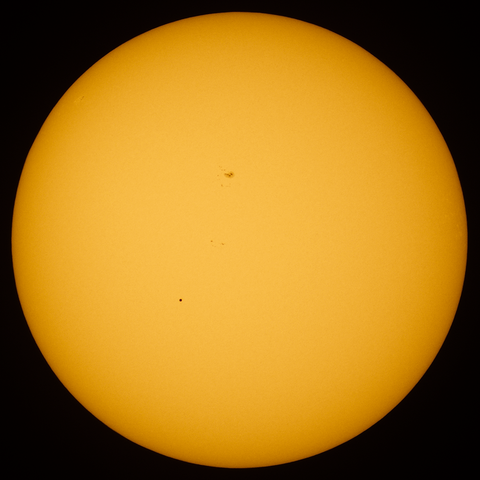
11 November 2019 • Visible anywhere in Africa
Image credit: Elijah Mathews

Image credit: Elijah Mathews
On the afternoon and evening of 11 November 2019 a rare celestial event will take place. The planet Mercury moves between the Sun and Earth. Observers all over Africa will be able to see a tiny black dot making its way across the solar disk.
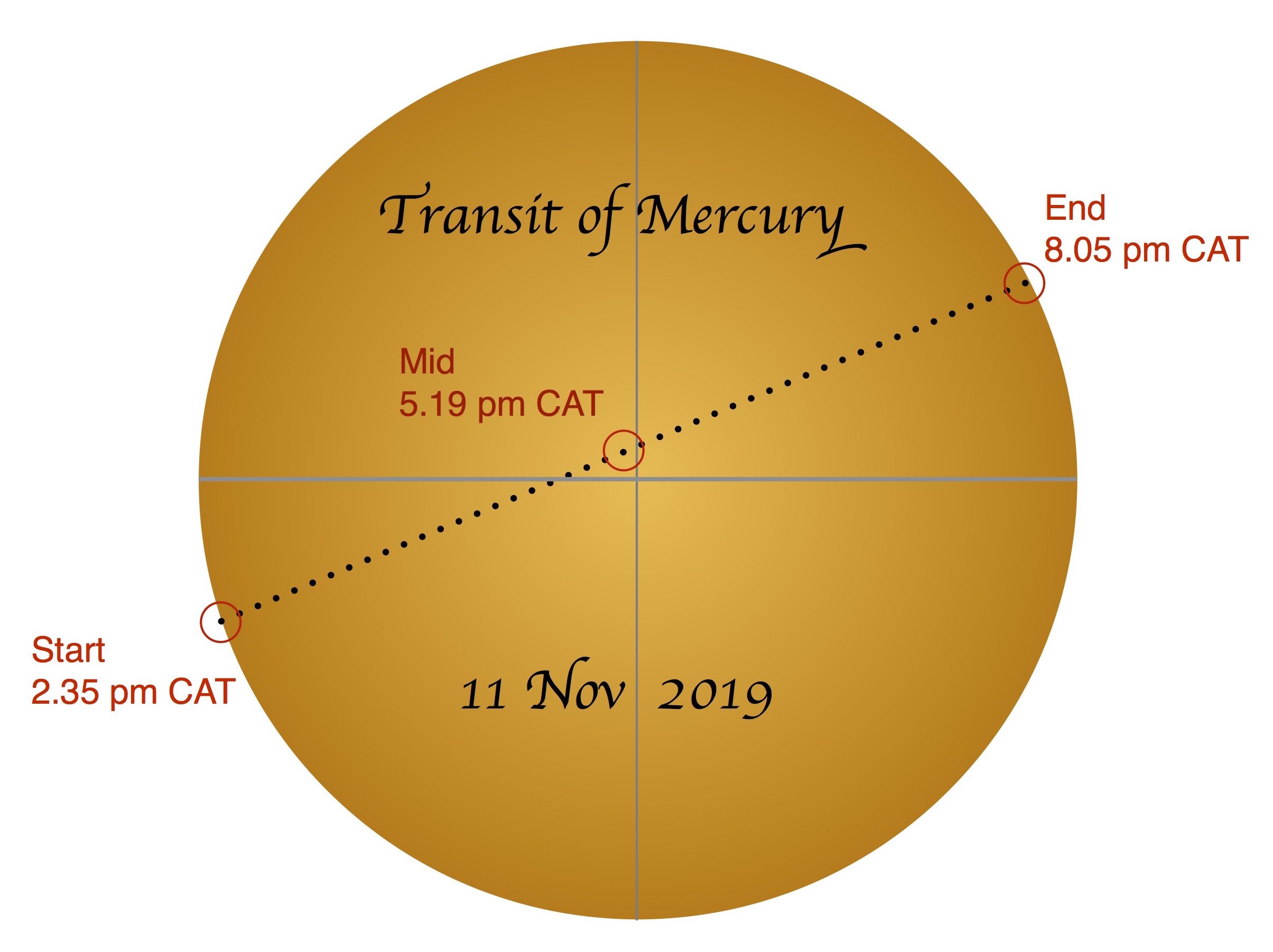
The event is rare as Earth and Mercury orbit the Sun in different planes, so that the three seldom line up. Actually, your next chance to view a transit of Mercury will be in 2032 only! If you want to view Venus moving across the Sun, you’ll have to wait even longer - the next transit of Venus takes place in 2117. No other planet is transiting the Sun, as they are all further away from the Sun than the Earth.
The transit starts at 14:35 Central Africa Time (12:35 Greenwich Mean Time, 13:35 West Africa Time, 15.35 East Africa Time, and 16:45 pm for Mauritius and Seychelles Time) and lasts for about 5.5 hours. This transit is special since the path of Mercury will pass much closer to the centre of the Sun’s image on the sky compared to the previous transits.
| Time Zone | Start | Mid | End |
|---|---|---|---|
| Greenwich Mean Time | 12:35 | 15:19 | 18:05 |
| West Africa Time | 13:35 | 16:19 | 19:05 |
| Central Africa Time | 14:35 | 17:19 | 20:05 |
| East Africa Time | 15:35 | 18:19 | 21:05 |
| Mauritius & Seychelles | 16:45 | 19:19 | 22:05 |
Will the transit start at exactly the same moment for all of Africa? Not really. People in Senegal will see the black disk of Mercury entering the disk of the Sun in the sky at 12:35:37 Greenwich Mean Time. However, if you are observing the transit far away in Somalia instead, this moment will happen at 12:34:57 Greenwich Mean Time.
This small time difference has been used by astronomers in centuries past to try and measure the distance between Earth and Mercury, giving them the leverage to calculate all distances in our solar system.
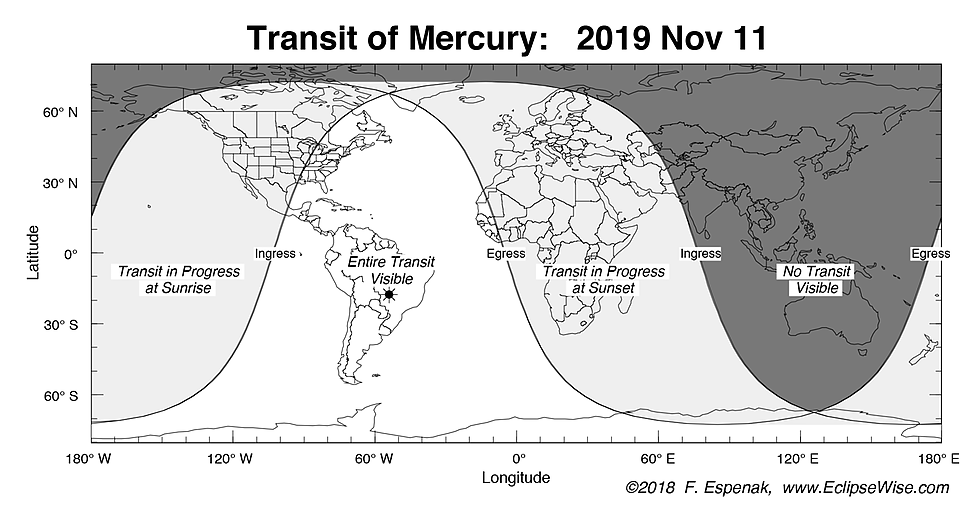
So for how long can you see the transit from your location? Till your local sunset of course. The Sun sets earlier in the east and later in the west. Hence, the more westerly your location, more you can see of the transit,. For west African countries like Senegal, Guinea, Sierra Leone, Liberia etc, the entire transit will be visible. For countries like Libya, Chad, DRC, South Africa etc, the sun will set when the transit is almost three quarters over. For Madagascar, Mauritius etc, the sun will set before half the transit is over. However, even from the eastern most parts of Africa, we can see almost 2 hours of the initial part of the transit.
You may have seen a solar eclipse through eclipse goggles, a pin hole camera or even through the shadows cast by tiny holes in between leaves of a tree. You may even have seen the transit of Venus in 2012 through a very simple telescope. However, Mercury will be about 190th the size of the Sun’s disk, and you would therefore certainly need a small telescope to see the transit. An image of the Sun that is at least 15-30 cm in diameter is needed in order that Mercury can be seen as a dot of 1-2 mm size on its surface.
The safest way to see the transit is to project the image of the Sun on to a sheet of paper or a screen, and see this image. By using a telescope to project a steady, well focused and large image of the sun, one will be able to study the sun at one’s leisure, with no risk to the eyes. It has the added advantage that many people can see the transit at the same time. For students interested in making some quantitative measurements of the sun or even the transit, projection is the best method. However, make sure that nobody accidentally or intentionally looks through the eyepiece.
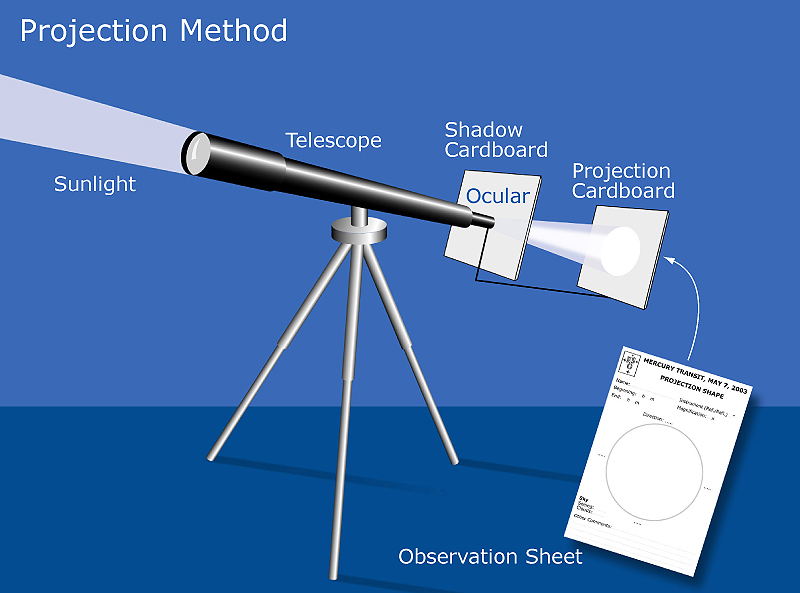
So what do you need to see the transit? You need a small telescope, with an aperture diameter between 2 and 4 inches. The Sun is a very bright object and its rays will heat your telescope quite a bit. Using much larger telescopes than a 5 inch is not going to be very helpful. We need as large an image of the sun as possible, and hence, a large focal length objective for the telescope is preferable. Note that the eyepiece should not be cased in plastic, as this will melt when the telescope is pointed at the sun.
The story starts in 1629, with Johannes Kepler. Kepler had earlier demonstrated that planets move around the Sun in elliptical orbits, and described exactly how they moved in these orbits. In 1629, based on his Rudolphine tables, Kepler predicted that a transit of Mercury would occur on 7th Nov 1631 and that a transit of Venus would occur on 6th Dec 1631. The transit of Mercury was seen but the transit of Venus was not visible from most of Europe. It was due to new calculations by Jeremiah Horrocks that Horrocks and his friend Crabtree could see the next Venus transit on 4th Dec 1639.
The transit of Mercury that was predicted to occur on 7th Nov 1631 by Kepler, was indeed seen in Europe. Pierre Gassendi published his telescopic observations of the transit from Paris. Gassendi was a remarkable astronomer, who managed to observe and measure the transit with ingenuity and skill. Remember, the telescope had been invented only twenty years before then! The transit was also seen by Johann Cysat from Innsbruck, Austria and Johannes Quietanus from Alsace in France.
The next transit of Mercury which was observed was from India by Jeremiah Shakerly. He had himself predicted a transit of Mercury to occur on 3rd Nov 1651 and he was able to observe Mercury on the face of the Sun.
Christiaan Huygens observed the next transit in 1661, and the following one was observed by Edmund Halley (of Halley’s Comet fame) in 1677 from St. Helena, along with many others. Soon after, Halley published a paper where he explained how you could use transits to measure the size of the solar system, leading to two centuries of international expeditions to time them accurately. Te-Whanganui-o-Hei on the northern island of New Zealand was named Mercury Bay in honour of the place where James Cook and Charles Green observed the transit of Mercury on 9th Nov 1769.
There have been many published historic observations from Africa by astronomers of European origin, notably of the transits of Mercury on 5 Nov 1868 from Cape Town in South Africa, on 10 Nov 1894 from Grahamstown in South Africa, on 14 November 1907 from Johannesburg in South Africa, Chiloanga in DRC and Mauritius.
We are currently aware of the following planned events for viewing the transit.
| Country | Organisation | Location |
|---|---|---|
| Morocco | Association d'Astronomie Amateur de Marrakech (3AM) | Centre Culturel Atlas Golf Marrakech |
| Algeria | Billal Bensalah | Astro Club of Angham Elhayat Guerrara |
| South Africa | Southern Cape Astronomy Club | Southern Cape Astronomy Club Pearly Beach |
| South Africa | Cape Centre of the Astronomical Society of South Africa | Eden on the Bay Mall, Big Bay, Blouberg Cape Town |
| South Africa | UNISA Science Engagement Centre | UNISA Observatory Pretoria |
| South Africa | Senekal Astronomy Club | Resident 20 Boerbok Street Senekal |
| South Africa | South African Astronomical Observatory | SAAO Auditorium, 1 Observatory Road, Observatory Cape Town |
| Kenya | M87 | Technical University of Kenya (TUK) Nairobi |
| South Africa | Department of Science and Innovation | CSIR Campus, Meiring Naude Road, DSI Building (Building No. 53) Tshwane |
| Nigeria | Astronomers without Borders (AWB) Nigeria | Obasanjo Space Centre, Airport road Abuja |
| Mozambique | Cláudio Misés Paulo | Catedral Catholic Church Maputo |
| Madagascar | Haikintana Astronomy Association | Habaka Parking Antananarivo |
| Ghana | Ghana Space Science And Technology Institute | School of Nuclear And Applied Science, adjacent to the Atomic Police Station-Kwabenya Accra-Kwabenya |
| Togo | ONG Science Géologique pour un Développement Durable (SG2D) | Complexe scolaire la Sagesse, Quartier Aflao-Gakli, rue de la Sagesse Lomé |
| Ethiopia | Abdu Ali Amede | Near to the Auditorium Hall Woldia (near to Lalibela) |
| South Africa | South African Astronomical Observatory | Site C taxi rank, Site C station Khayelitsha, Cape Town |
| South-Africa | Ruhann Steyn | North-West University, Potchefstroom Campus Potchefstroom |
| Algeria | Sirius Astronomy Association | University Mentouri, parking avaialable Constantine |
| São Tomé e Príncipe | Lúcio Carvalho | São Tomé São Tomé |
| Sudan | OIU Deprt. Of Astronomy & Meteorology | Center of Alfetihab Omdurman |
| Mauritius | Rajiv Gandhi Science Centre | Police station Flic en Flac |
| Ethiopia | Ethiopian Space Science Society | Kilinto, Akaki Kality Addis Ababa |
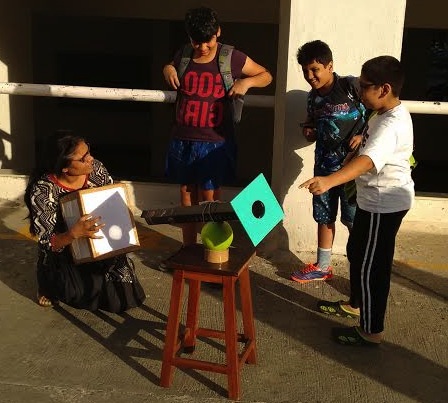
As the transit is visible from all over Africa and you only need a small telescope for viewing it, this is a great opportunity for doing public outreach and enjoying this sight with lots of other people.
If you are planning a public viewing event of the transit on 11 November, please fill in this Google form to let us know, so that we can share the information.
Also feel free to send us any photos taken during your event - we’ll be happy to post a selection on this website.
More detailed information about the Mercury transit is available from the Guide to the Transit of Mercury of 11th November 2019 and the Transit of Mercury poster.